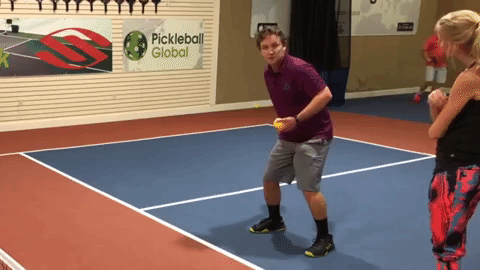Pop Up Dinks
Many players will be familiar with the feeling of hitting a dink too high that gets pounded by their opponent. Let's identify two of the most common reasons for poor height control.
Too Much Wrist Action
It doesn't take much to make the ball travel fast over the net. And while this might be good if you are hitting hard at your opponent, it spells disaster for a dink.When players engage their wrists when they are dinking, they are more likely to produce unwanted speed and height.
Too Much Backswing
Even if players don't swing fast, if they have a long backswing the paddle is likely to gather momentum as it comes forward. And this force then gets transferred to the ball, resulting in a dink that is sent high and gets put away.
A Compact Touch
If players can learn to keep the paddle out front (no backswing) and to have just a gentle touching feeling when making contact, they are more likely to play dinks that stay low. Players should aim to have a stable paddle face at impact and think of keeping the paddle out front at all times.










